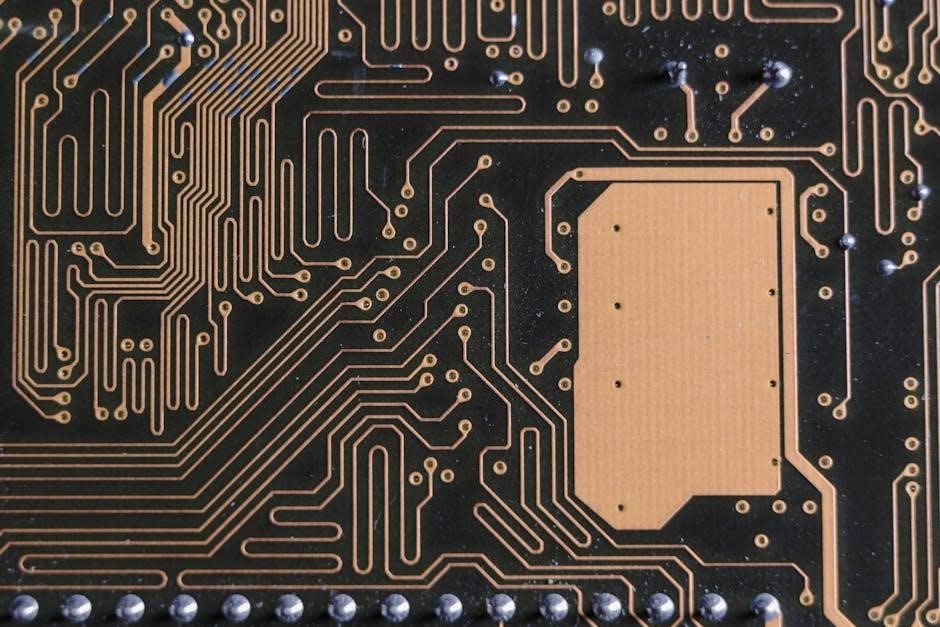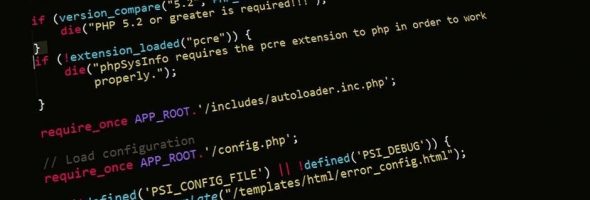2014 National Electrical Code (NEC) PDF: A Comprehensive Guide
The 2014 National Electrical Code (NEC)‚ also known as NFPA 70‚ is a critical standard published by the National Fire Protection Association (NFPA)․ This comprehensive guide serves as a foundational document‚ impacting electrical safety across various states and cities by shaping local codes․
The 2014 National Electrical Code (NEC)‚ a crucial document also recognized as NFPA 70‚ establishes the benchmark for electrical safety across the United States․ Published by the National Fire Protection Association (NFPA)‚ it’s revised every three years to incorporate the latest advancements‚ safety protocols‚ and technological changes in the electrical industry․
This code serves as the cornerstone for many state and municipal electrical regulations‚ providing a unified framework for safe electrical installations and practices․ Local jurisdictions often adopt the NEC‚ sometimes with amendments‚ to address specific regional needs and concerns․ The 2014 edition includes significant updates and revisions aimed at enhancing safety and improving the clarity and usability of the code․
Understanding the 2014 NEC is essential for electricians‚ engineers‚ contractors‚ inspectors‚ and anyone involved in the design‚ installation‚ or maintenance of electrical systems․ It offers detailed guidelines on wiring methods‚ overcurrent protection‚ grounding‚ and equipment installation‚ ensuring that electrical systems are safe and reliable․ This guide provides an overview of the 2014 NEC‚ including its key features‚ updates‚ and how to access it in PDF format․
What is the National Electrical Code (NEC)?
The National Electrical Code (NEC)‚ officially known as NFPA 70‚ is a comprehensive set of standards and guidelines for the safe installation of electrical wiring and equipment in the United States․ It is developed and published by the National Fire Protection Association (NFPA) and is updated every three years to reflect the latest advancements in electrical technology and safety practices․ The NEC is not a law itself‚ but it is widely adopted by state and local jurisdictions‚ becoming legally enforceable through these adoptions․
The primary purpose of the NEC is to safeguard people and property from hazards arising from the use of electricity․ It covers a wide range of topics‚ including wiring methods‚ overcurrent protection‚ grounding‚ equipment installation‚ and special occupancies․ The code provides detailed requirements for electrical installations in residential‚ commercial‚ and industrial buildings‚ as well as outdoor installations․
Compliance with the NEC ensures that electrical systems are installed in a manner that minimizes the risk of electrical shock‚ fire‚ and other electrical hazards․ It serves as a vital resource for electricians‚ engineers‚ inspectors‚ and anyone involved in the electrical industry‚ promoting safety and consistency in electrical installations nationwide․
NFPA 70: The Foundation of Electrical Safety
NFPA 70‚ more commonly known as the National Electrical Code (NEC)‚ stands as the cornerstone of electrical safety in the United States․ It provides a comprehensive framework of regulations and guidelines designed to minimize the risks associated with electrical installations․ This code addresses a wide spectrum of electrical topics‚ ensuring the safe and effective use of electricity across residential‚ commercial‚ and industrial settings․
The NEC’s importance stems from its ability to provide standardized practices for electrical wiring‚ equipment installation‚ and overall system design․ By adhering to NFPA 70‚ electricians‚ engineers‚ and inspectors can ensure that electrical systems are installed and maintained in a manner that reduces the potential for electrical shocks‚ fires‚ and other hazards․ The code’s regular updates incorporate the latest technological advancements and safety research‚ keeping it relevant and effective in an ever-evolving field․
Furthermore‚ NFPA 70 serves as a legal reference point for many jurisdictions‚ as state and local governments often adopt it as the basis for their electrical codes․ This widespread adoption ensures a consistent level of electrical safety throughout the country‚ protecting both people and property from the dangers of improperly installed or maintained electrical systems․
Availability of the 2014 NEC PDF
Accessing the 2014 NEC PDF is essential for electrical professionals‚ students‚ and anyone involved in electrical work․ Fortunately‚ there are several avenues to obtain this vital document․ One primary source is the National Fire Protection Association (NFPA) itself․ While a hard copy purchase is an option‚ the NFPA also provides free online access to the NEC‚ including the 2014 edition‚ through their website․
This free access allows users to conveniently view the code online after creating a free account․ This is a valuable resource‚ providing immediate access to the code’s content․
Beyond the NFPA‚ other platforms may offer downloadable PDF versions of the 2014 NEC․ Websites such as Mike Holt Enterprises sometimes provide free publications‚ including code-related materials․ However‚ users should exercise caution when downloading from third-party sources‚ ensuring the file’s authenticity and integrity to avoid potential security risks․
For those seeking a readily available and potentially downloadable PDF‚ exploring resources like Dropbox or specialized electrical forums might yield results‚ although the legitimacy and accuracy of such files should always be verified against the official NFPA publication․ Always prioritize official or reputable sources when accessing the 2014 NEC PDF to ensure compliance and safety․
Free Online Access to the NEC
The National Fire Protection Association (NFPA) acknowledges the importance of widespread access to safety information and offers free online access to the National Electrical Code (NEC)‚ including the 2014 edition․ This initiative ensures that vital safety guidelines are readily available to a broad audience‚ encompassing traditional users and individuals with a strong interest in electrical safety․
To gain free online access‚ users typically need to create an account on the NFPA website․ This involves a simple registration process‚ after which users can conveniently browse the NEC online․ This online accessibility places important safety information at the fingertips of users‚ promoting informed decision-making and safer electrical practices․
NFPA’s commitment to providing free online access underscores its dedication to public safety․ By removing financial barriers to accessing the NEC‚ the NFPA empowers individuals to stay informed about the latest electrical codes and standards‚ fostering a culture of safety and compliance within the electrical industry and beyond․ This initiative ensures that crucial safety information is readily available‚ contributing to a safer environment for everyone․
Downloading the PDF Version
While free online access to the 2014 NEC is readily available through the NFPA‚ some users may prefer to download a PDF version for offline access or archival purposes․ Obtaining a downloadable PDF of the 2014 NEC might require exploring different avenues‚ as the NFPA primarily promotes online viewing through its platform․
One potential source for finding a downloadable PDF could be through electrical industry forums or online communities where users share resources․ However‚ it’s essential to exercise caution when downloading files from unofficial sources to ensure the file’s integrity and avoid potential security risks․ Always verify the source and scan the downloaded file with antivirus software․
Another avenue to explore is checking the websites of electrical equipment manufacturers or training providers․ Sometimes‚ these organizations offer free resources‚ including older versions of the NEC in PDF format‚ as part of their educational or promotional materials․ Keep in mind that availability may vary‚ and it’s crucial to confirm the legitimacy and accuracy of any PDF obtained from a third-party source․
Key Changes and Updates in the 2014 NEC
The 2014 NEC introduced several important changes and updates to enhance electrical safety․ These revisions addressed emerging technologies‚ clarified existing requirements‚ and incorporated lessons learned from real-world applications․ Staying abreast of these changes is crucial for electrical professionals to ensure compliance and promote safe installations․
One significant area of focus in the 2014 NEC was Article 250‚ which covers grounding and bonding․ Several revisions were made to clarify requirements for grounding electrode systems‚ equipment grounding conductors‚ and bonding of metal enclosures․ These changes aimed to improve the effectiveness of grounding systems in protecting against electrical shock and equipment damage․

Another notable update involved GFCI protection․ The 2014 NEC expanded GFCI protection requirements to include all 125V‚ 15A and 20A receptacles in laundry areas‚ addressing the increased risk of electrical shock in these locations․ This change reflects a proactive approach to preventing electrical injuries in potentially hazardous environments․ Understanding these key changes is paramount for safe and compliant electrical work․
Article 250 Revisions
Article 250 of the 2014 NEC‚ which deals with grounding and bonding‚ underwent significant revisions to enhance electrical safety․ These revisions aimed to clarify existing requirements and address concerns identified in the field․ A dedicated chapter in resources isolates these changes for easy reference․
One key area of focus was the grounding electrode system․ The 2014 NEC provided more specific guidance on the selection and installation of grounding electrodes‚ ensuring a more effective path for fault current․ Revisions also addressed the bonding of metal enclosures and equipment‚ minimizing the risk of voltage potential and electrical shock hazards․
Furthermore‚ the 2014 NEC clarified requirements for equipment grounding conductors‚ ensuring proper sizing and installation․ These revisions contributed to a more robust and reliable grounding system‚ enhancing protection against electrical faults and improving overall electrical safety․ Staying informed about these revisions is crucial for electrical professionals to ensure compliance and implement safe grounding practices․
GFCI Protection in Laundry Areas [210․8(A)(10)]
The 2014 NEC introduced a significant safety enhancement by adding Section 210․8(A)(10)‚ mandating GFCI (Ground Fault Circuit Interrupter) protection for all 125V‚ 15A or 20A receptacles located in laundry areas․ This requirement addresses the increased risk of electrical shock in these environments due to the presence of water and moisture․
GFCI protection is designed to detect ground faults‚ which occur when electricity flows through an unintended path‚ such as a person’s body․ In laundry areas‚ where appliances like washing machines and dryers are used‚ the risk of ground faults is elevated․ By requiring GFCI protection‚ the 2014 NEC significantly reduces the likelihood of electrical shock injuries in these areas․

This provision ensures that receptacles within laundry areas are equipped with GFCI protection‚ providing a safer environment for homeowners and occupants․ The implementation of 210․8(A)(10) demonstrates the NEC’s commitment to enhancing electrical safety and protecting individuals from potential hazards in their homes․
Resources and Study Materials

Navigating the 2014 NEC effectively requires access to reliable resources and comprehensive study materials․ Several options are available to assist electricians‚ inspectors‚ and students in understanding and applying the code’s requirements․ These resources range from free online publications to detailed code digests‚ offering a variety of learning tools․
Mike Holt Enterprises‚ a renowned provider of electrical training materials‚ offers free publications that can be valuable for studying the 2014 NEC․ These resources often include articles‚ guides‚ and sample questions that help users grasp key concepts and code changes․ Additionally‚ Eaton’s Crouse-Hinds provides a 2014 Code Digest‚ a reference tool outlining equipment and installation requirements in hazardous locations․
Furthermore‚ various websites and forums dedicated to electrical safety offer discussions‚ tutorials‚ and practice exams related to the 2014 NEC․ These platforms provide opportunities for individuals to collaborate‚ share knowledge‚ and test their understanding of the code․ Utilizing a combination of these resources can significantly enhance one’s ability to interpret and apply the 2014 NEC effectively․
Mike Holt Enterprises Free Publications
Mike Holt Enterprises is a well-known name in the electrical industry‚ recognized for its comprehensive training materials and resources․ Among their offerings are several free publications that serve as invaluable tools for understanding and applying the 2014 National Electrical Code (NEC)․ These free resources are designed to assist electricians‚ inspectors‚ and students in grasping the intricacies of the code․
These publications often include articles that break down complex code requirements into easily digestible information․ They may also feature detailed illustrations and diagrams to aid in visual understanding․ Furthermore‚ practice questions and sample exams are sometimes included‚ allowing users to test their knowledge and identify areas where further study is needed․

Accessing these free publications is typically straightforward‚ often available directly on the Mike Holt Enterprises website․ By taking advantage of these resources‚ individuals can gain a solid foundation in the 2014 NEC‚ enhancing their ability to perform safe and compliant electrical work․ These materials provide a practical and accessible way to stay informed about the code’s requirements․

Eaton’s Crouse-Hinds 2014 Code Digest

Eaton’s Crouse-Hinds offers a 2014 Code Digest that serves as a valuable resource for professionals working in hazardous locations․ This digest provides a concise reference for equipment and installation requirements outlined in the 2014 National Electrical Code (NEC)‚ specifically tailored for environments with potentially explosive or flammable substances․
The Crouse-Hinds Code Digest is designed to simplify the process of navigating the NEC‚ particularly for designers and installers who need quick access to relevant information․ It typically includes summaries of key code sections‚ tables‚ and diagrams that are essential for ensuring compliance in hazardous locations․ This resource helps users understand the specific requirements for selecting and installing electrical equipment in these specialized environments․
This digest is often available free of charge‚ making it an accessible tool for a wide range of professionals․ By utilizing the Crouse-Hinds 2014 Code Digest‚ individuals can enhance their understanding of the NEC’s requirements for hazardous locations‚ ultimately contributing to safer and more compliant electrical installations․ It provides a practical and efficient way to stay informed about the code’s complex regulations․
Adopting Jurisdictions

The 2014 National Electrical Code (NEC) has been widely adopted by numerous jurisdictions across the United States‚ forming the basis for their local electrical codes․ These adopting jurisdictions recognize the importance of the NEC in ensuring electrical safety and standardization․ States like Alabama‚ Colorado‚ Connecticut‚ Delaware‚ and Florida‚ along with the District of Columbia‚ have all incorporated the 2014 NEC into their regulations․
The adoption process often involves incorporating the NFPA 70 standard‚ sometimes with local amendments to address specific regional needs or concerns․ This ensures that electrical installations within these jurisdictions meet a minimum level of safety and quality․ The NEC provides a comprehensive framework for electrical design‚ installation‚ and inspection‚ promoting consistency and reducing the risk of electrical hazards․
Furthermore‚ other areas‚ such as Hawaii and DuPage County‚ may also adhere to the 2014 NEC‚ reflecting its broad influence․ By adopting the NEC‚ these jurisdictions demonstrate a commitment to protecting their residents and businesses from electrical dangers․ The consistent application of the NEC helps to create a safer environment for everyone․
States Using the 2014 NEC
Several states across the United States have adopted the 2014 National Electrical Code (NEC) as the foundation for their electrical safety standards․ These states recognize the NEC’s comprehensive guidelines and its importance in ensuring safe electrical installations․ Among the states that have adopted the 2014 NEC are Alabama‚ Colorado‚ Connecticut‚ Delaware‚ and Florida․
By adopting the 2014 NEC‚ these states have committed to upholding a consistent standard of electrical safety for residents and businesses․ The NEC provides detailed regulations for electrical wiring‚ equipment‚ and installations‚ reducing the risk of electrical fires‚ shocks‚ and other hazards․ The adoption process typically involves incorporating the NEC into state laws and regulations‚ sometimes with state-specific amendments to address unique regional needs․
Furthermore‚ the District of Columbia and Hawaii are also known to use the 2014 NEC‚ demonstrating its widespread acceptance․ The NEC serves as a vital resource for electricians‚ contractors‚ inspectors‚ and other professionals involved in the electrical industry‚ ensuring they have access to the latest safety information and best practices․ The consistent application of the NEC promotes a safer electrical environment nationwide․
Commonwealth of Massachusetts (527 CMR 12․00)
The Commonwealth of Massachusetts incorporates the National Electrical Code (NEC) into its regulations through the specific code known as 527 CMR 12․00․ This regulation formally adopts the NEC as the standard for electrical installations within the state‚ making it legally binding․ The 2014 NEC serves as a crucial component of Massachusetts’ electrical safety framework․
By referencing the NEC within 527 CMR 12․00‚ Massachusetts ensures that all electrical work adheres to nationally recognized best practices․ This incorporation provides a consistent and reliable set of rules for electricians‚ contractors‚ and inspectors to follow․ The regulations in 527 CMR 12․00 cover a wide range of electrical topics‚ including wiring methods‚ overcurrent protection‚ grounding‚ and equipment installation․

The adoption of the 2014 NEC by Massachusetts highlights the state’s commitment to maintaining high standards of electrical safety․ Through 527 CMR 12․00‚ the Commonwealth ensures that electrical systems are designed‚ installed‚ and maintained in a manner that minimizes risks․ This approach protects residents‚ businesses‚ and properties from potential electrical hazards‚ promoting a safer environment for everyone in Massachusetts․
The 2014 National Electrical Code (NEC) PDF serves as an indispensable resource for anyone involved in electrical work‚ offering comprehensive guidelines for safe and compliant installations․ Understanding and adhering to the NEC’s requirements is crucial for electricians‚ contractors‚ inspectors‚ and engineers alike․ The code’s detailed provisions address a wide range of electrical topics‚ ensuring consistent and reliable safety standards․
Accessing the 2014 NEC PDF allows professionals to readily consult the code’s specifications‚ diagrams‚ and tables‚ facilitating accurate and informed decision-making․ Whether it’s understanding grounding requirements‚ GFCI protection‚ or wiring methods‚ the NEC PDF provides the necessary information to perform electrical work safely and effectively․ Furthermore‚ staying updated with the latest edition of the NEC is essential for maintaining compliance and mitigating potential hazards․
By utilizing the 2014 NEC PDF‚ individuals can enhance their knowledge‚ improve their skills‚ and contribute to a safer electrical environment․ The code’s impact extends beyond individual projects‚ influencing the overall safety and reliability of electrical systems in homes‚ businesses‚ and communities․ Embracing the NEC’s principles and practices is a testament to a commitment to excellence and a dedication to protecting lives and property․
Importance of Staying Updated with Electrical Codes
Remaining current with the latest electrical codes‚ such as the 2014 NEC‚ is paramount for professionals in the electrical industry․ Electrical codes are not static; they evolve to incorporate new technologies‚ address emerging safety concerns‚ and reflect advancements in best practices․ Failing to stay updated can lead to non-compliance‚ increased risk of electrical hazards‚ and potential liability issues․

By diligently following code revisions‚ electricians‚ contractors‚ and inspectors can ensure that their work adheres to the highest safety standards․ The NEC is regularly updated to reflect changes in the electrical landscape‚ including new materials‚ installation methods‚ and equipment requirements․ These updates are crucial for preventing electrical shocks‚ fires‚ and other hazards that can arise from outdated or improper installations․
Moreover‚ staying informed about electrical codes demonstrates a commitment to professional development and ethical conduct․ It enables individuals to provide their clients with the safest and most reliable electrical services possible․ Investing in continuing education‚ attending industry conferences‚ and regularly reviewing code updates are essential steps in maintaining competence and ensuring compliance with the latest electrical regulations․ Ultimately‚ a proactive approach to code compliance benefits everyone by creating a safer and more secure electrical environment․

